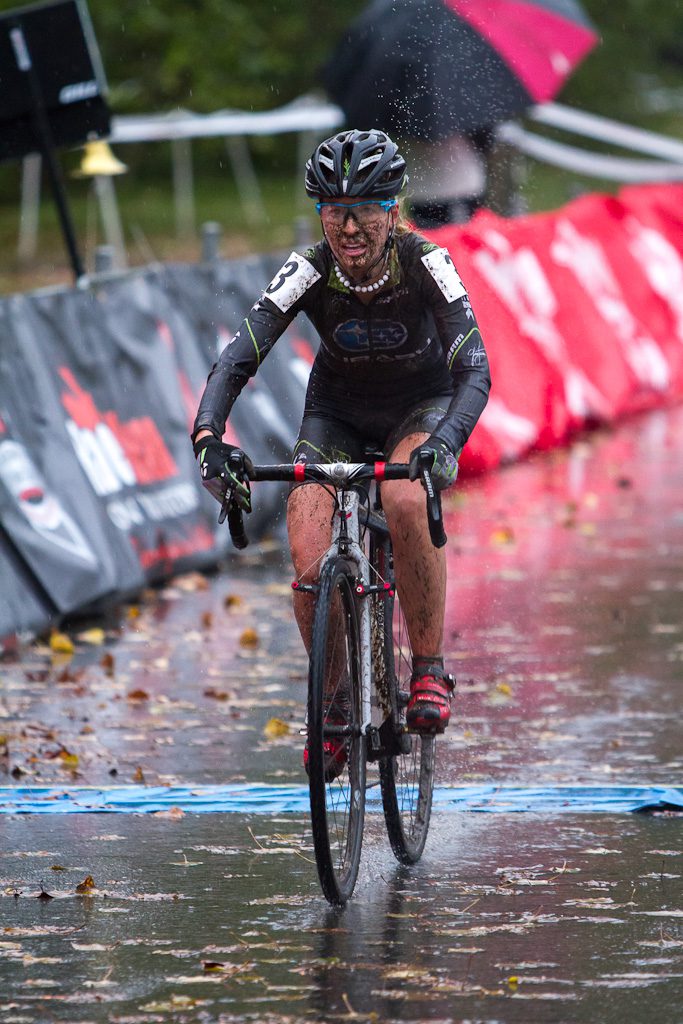From the Archives: A beginner’s guide to cyclocross
Cyclocross solves the fall-weather cycling issue by taking elements of road and mountain biking – pavement, gravel, grass, singletrack – and putting them together on courses, mostly in parks.

The end of summer can mean defeat for some cyclists, which then leads them to hang up their bikes for the winter. But you don’t have to shelve the bike so soon. Cyclocross solves the fall-weather cycling issue by taking elements of road and mountain biking – pavement, gravel, grass, singletrack – and putting them together on courses, mostly in parks. Just getting started with bike racing? Cyclocross, or CX or ’cross is perhaps the best discipline for new cyclists wishing to compete. The races are fun and fairly safe because they feature lower speeds and less-technical terrain than road or mountain bike races. But ’cross isn’t just for newbies. Elites use the discipline for its intensity and variety, as well as for building valuable tactics and skills.
A cyclocross bike looks like a road bike, but it’s modified to be stronger, to ride better off-road and to allow for mud clearance. Brakes are disc or centre-pull cantilevers to enhance tire and mud clearance. The tires are typically knobby or semi-slick 700c x 30 to 32. A dedicated ’cross bike is optimal and affordable. To try out the sport, most races will permit riders outside of the elite ranks to use a mountain bike, a hybrid or a road bike with little or no modifications.
Skills are central to cyclocross. There are both on-bike and off-bike skills that you must master. If you are a strong runner, you can leverage that skill. ’Cross racing rewards those who are able to ride at very high intensities, typically in short bursts, and those who can execute precise skills while experiencing these high intensities. Dismounts and mounts are important for barriers and run-ups, while cornering is essential given the focus on turns on a variety of terrains. Many local clubs offer weekly skill nights in which they set up a ’cross course and work together on developing the essential skills. These weeknight events are perhaps the best way to try out ’cross and gain motivation to get outside and ride during the fall.
“The sport’s infectious atmosphere, ease of entry and relevance to all cycling disciplines will keep you coming back each fall.”
Cyclocross organizers, spectators and athletes are drawn to the flexibility and accessibility of the sport. Races can be held in almost any location–city parks, fields and forests–and in a wide range of conditions. Races are 20 to 60 minutes long, so finishing is not a concern for any participant, from beginner to elite. The course typically takes between six and 10 minutes to complete around a spectator-friendly course, which lets the fans be part of the action and also keeps beginners close to the venue instead of alone on busy roads or unknown trails. For racers and spectators, this racing environment is quite enjoyable compared to classic mountain bike or road races where the race isn’t viewable except for at the start/finish. Cyclocross is a great addition to your cycling pursuits, whether for community, fitness or variety. The sport’s infectious atmosphere, ease of entry and relevance to all cycling disciplines will keep you coming back each fall.

Dismounting
Dismounting is important in cyclocross because almost every race has barriers or run-ups that will force you off the bike. To set up a great dismount, stand with your weight on your left foot and the left pedal at 6 o’clock in the stroke. Unclip your right foot, swing it around the back of the saddle and rest it behind your left foot and pedal as you coast toward the obstacle. Grab the top tube with your right hand before stepping off. It can be unnerving to coast with only one hand on the bars, but with practice, you’ll be able to balance with your left hand on the bar and right hip against the saddle. Once you are near the obstacle, unclip your left foot off of its pedal as you put your right foot to the ground. You’ll be propelled into a run. Since you already have your hand on the top tube, you can pick up the bike quickly and run over an obstacle
Mounting
Many new ’cross racers fear landing on their groins during the traditional cyclocross mount. This fear and lack of practice result in slow, inefficient and dangerous movements during races. To improve your mount, start by standing beside your bike, with your left hand on the handlebar and your right hand on top tube. Walk forward. Move your right hand to the handlebar while continuing to move forward. As you move your hand, look down quickly at your pedals to note their location. Then, swing your right leg up and place your right inner thigh – not your groin – onto your saddle. As your weight is transferred onto the saddle, move your feet to the noted pedal locations. Slide onto the saddle and start pedalling. Once you can do the process at walking speed, try running, and then with a dismount before. Your mobility may limit your mount. Usually a little hop or leaning the bike slightly inward can allow for a very relaxed mount.
Riding in the Mud
Mud riding is central to cyclocross. Once you get out there and gain confidence in the muck, it is quite fun. Tires and tire pressure are key elements to a successful day of muddy racing. Generally, larger, well-spaced knobs make a good mud tire. The lowest pressure you can run without hitting the rim or rolling the tire in corners will boost traction. Avoid braking suddenly or turning the bars too aggressively to help maintain traction. While pedalling, applying smooth power and finding straight lines that lead toward drier parts of the course will help you maintain forward momentum. For deep mud, which affects the bike’s behaviour much like sand, the key is to look where you want to go – usually the end of the pit – and shift slightly back on your seat while pedalling very hard. Running will become more important on muddy days so ensure your mounts and dismounts are great so that you can maximize momentum.
Barriers
Before you try “hurdling” barriers, ensure you have great mounts and dismounts. The optimal hurdle starts with a dismount with your right hand on the top tube. As your feet hit the ground, take quick purposeful steps – not big, ballerina hops – over each barrier. A shorter rider might have to modify the carry by putting the right hand under the top tube. Pros spend hours throughout their careers refining their barrier speed and efficiency. To practise at home, set up barriers – tape between trees works – and start at a slow speed until you can complete all the steps in the process. Then add a bit more speed and see what part of the process breaks down and needs focus. Adding intensity in the form of intervals or fun races adds another layer to refine your skill before racing.
Shouldering the Bike
Shouldering the bike is not as common as dismounting, mounting or cornering, but is still a great skill to have. You should shoulder the bike when the ground becomes inefficient for pushing the bike or when you have to carry for a long time (for example, up a stair run-up). Your bike can’t have bottle cages if you are going to throw it on your shoulder. The easiest way to shoulder starts with a dismount and an underhand top-tube grab. Then, lift the bike up onto your shoulder. Wrap your right arm around the front of the bike’s head tube and grab the left handlebar drop with the bars turned to the left. Your left arm is free to counterbalance you as you run. Your right arm can leverage or support the bike balanced on your shoulder. When it’s time to mount the bike, reverse the process: pass the left hood to your left hand, grab the top tube with your right hand and slide the bike very gently back onto the ground. You’re now ready to perform your well-practised mount.
